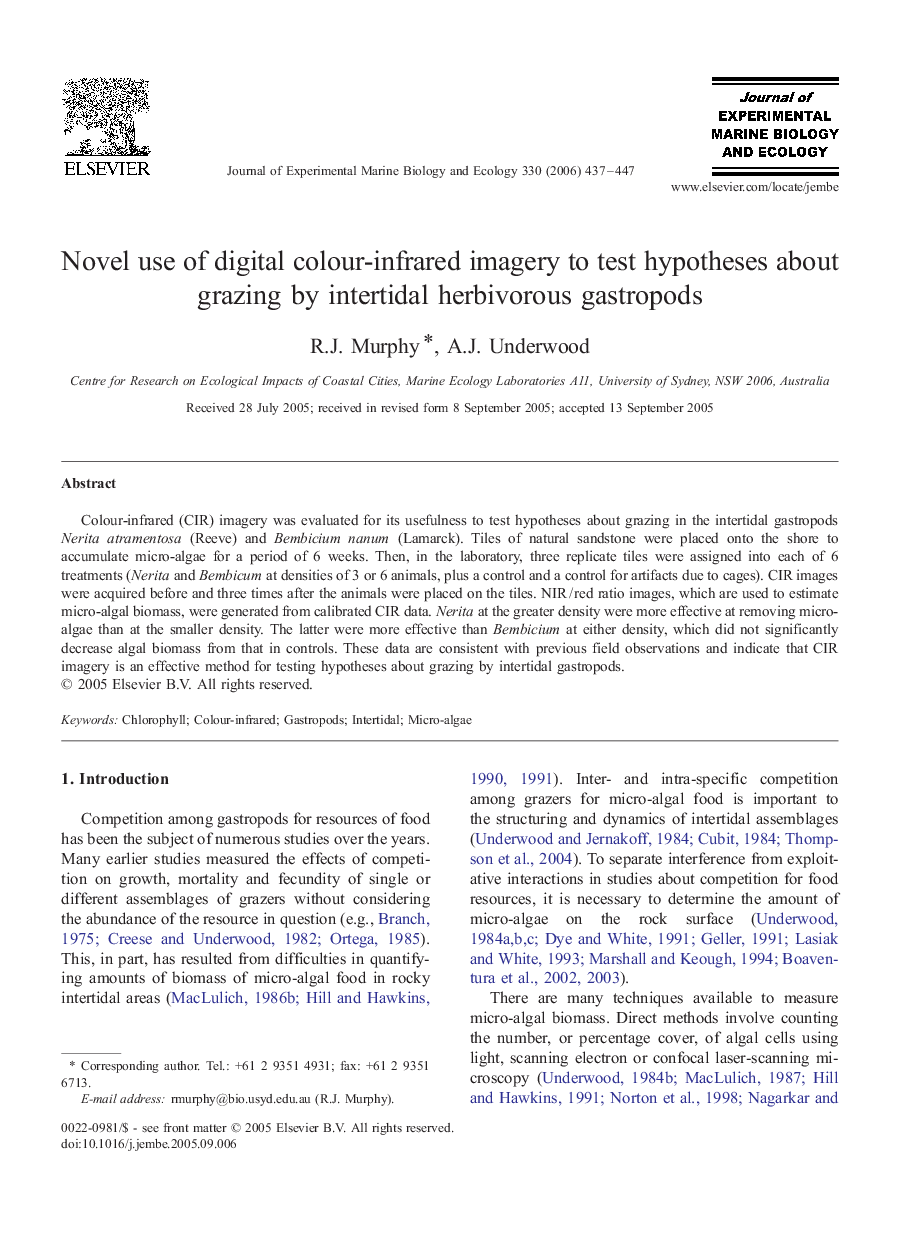| Article ID | Journal | Published Year | Pages | File Type |
|---|---|---|---|---|
| 4398188 | Journal of Experimental Marine Biology and Ecology | 2006 | 11 Pages |
Colour-infrared (CIR) imagery was evaluated for its usefulness to test hypotheses about grazing in the intertidal gastropods Nerita atramentosa (Reeve) and Bembicium nanum (Lamarck). Tiles of natural sandstone were placed onto the shore to accumulate micro-algae for a period of 6 weeks. Then, in the laboratory, three replicate tiles were assigned into each of 6 treatments (Nerita and Bembicum at densities of 3 or 6 animals, plus a control and a control for artifacts due to cages). CIR images were acquired before and three times after the animals were placed on the tiles. NIR / red ratio images, which are used to estimate micro-algal biomass, were generated from calibrated CIR data. Nerita at the greater density were more effective at removing micro-algae than at the smaller density. The latter were more effective than Bembicium at either density, which did not significantly decrease algal biomass from that in controls. These data are consistent with previous field observations and indicate that CIR imagery is an effective method for testing hypotheses about grazing by intertidal gastropods.
